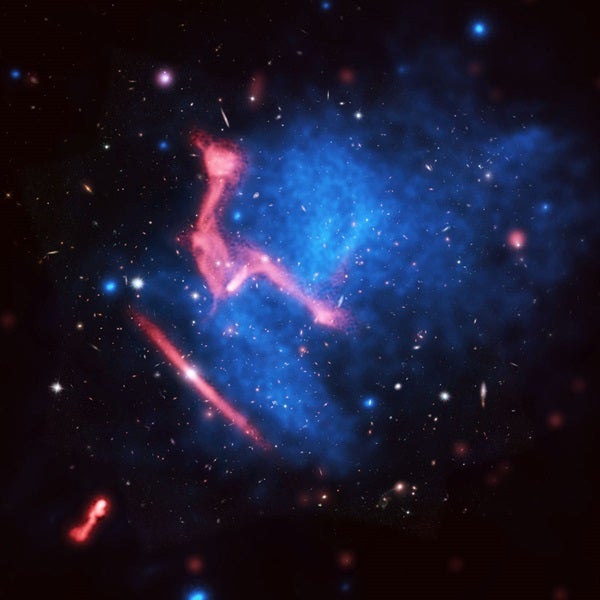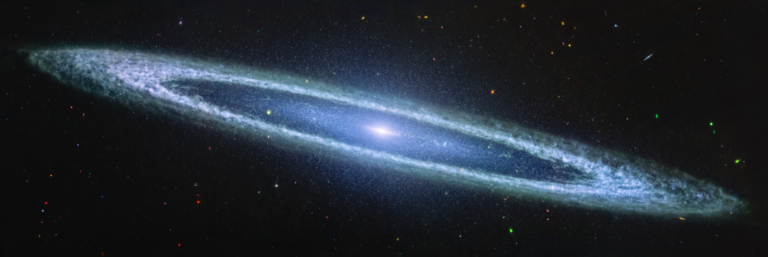The Hubble image forms the background of this composite, with the X-ray emission detected by Chandra in blue and radio emission seen by the VLA in red. The X-rays indicate hot, tenuous gas that pervades the region containing the galaxy clusters. The large, oddly shaped red feature at the center probably is a region where shocks caused by the collisions are accelerating particles that then interact with magnetic fields and emit the radio waves.
“The complex shape of this region is unique; we’ve never spotted anything like this before,” said Reinout van Weeren, an Einstein Fellow at the Harvard-Smithsonian Center for Astrophysics in Cambridge, Massachusetts. “The shape probably is the result of the multiple ongoing collisions.”
The new radio and X-ray observations are much more sensitive than previous ones, the scientists said. The combination of these images will make this region one of the best-studied examples of cluster-cluster collisions yet known and can yield new insights into the complex interactions during cluster mergers. Together, the merging clusters are called MACS J0717+3745, which also is one of the Hubble Frontier Fields for which the space telescope will produce the deepest observations ever.
The straight, elongated radio-emitting object is a foreground galaxy whose central black hole is accelerating jets of particles in two directions. The red object at bottom left is a radio galaxy that probably is falling into the cluster.










